
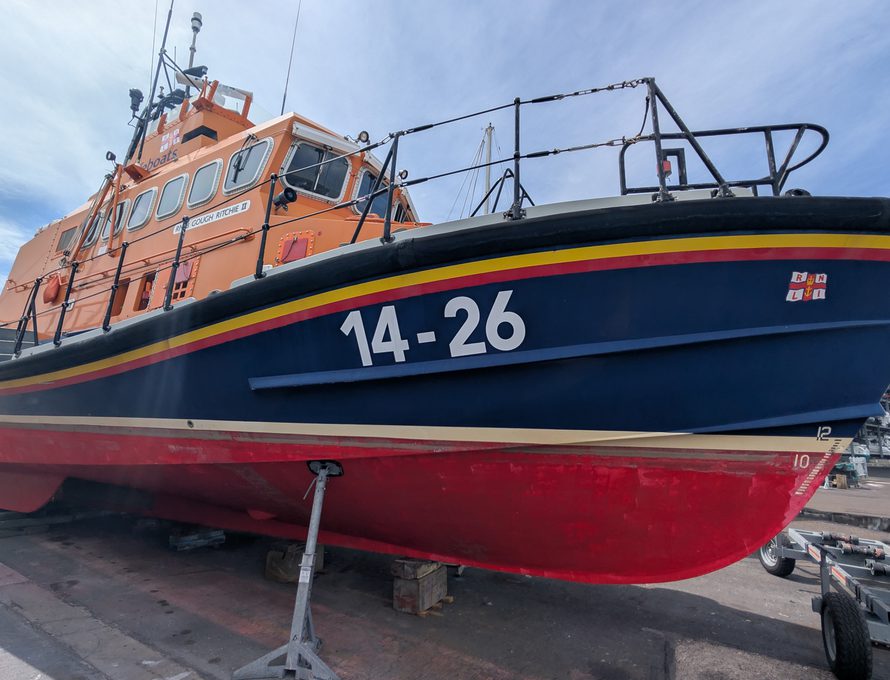
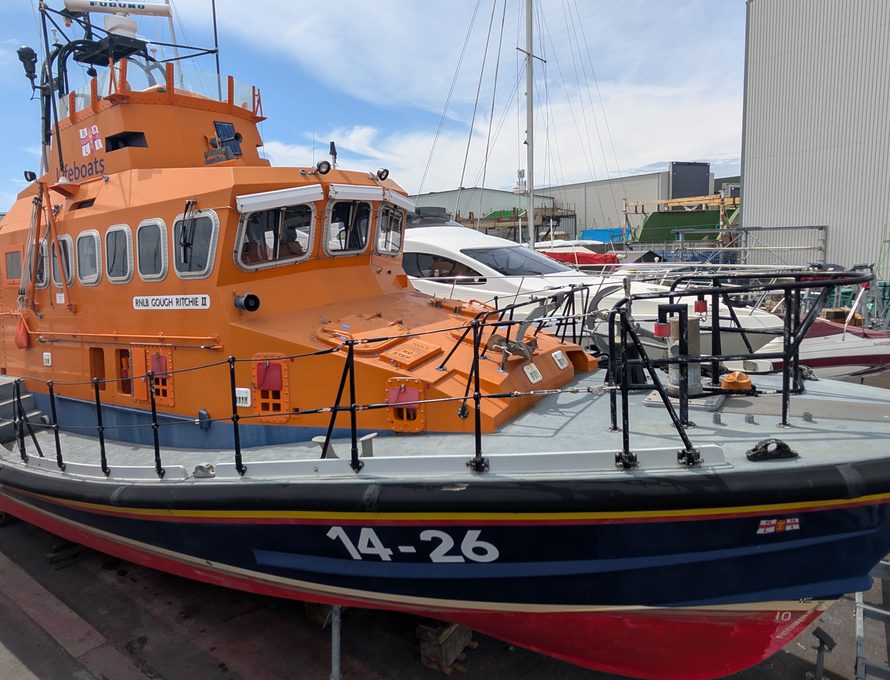
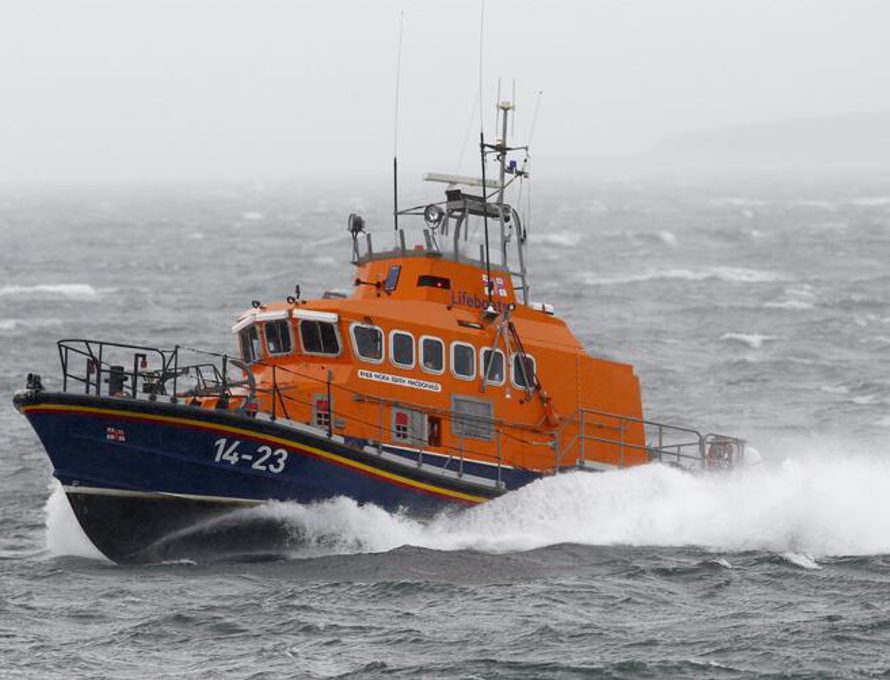
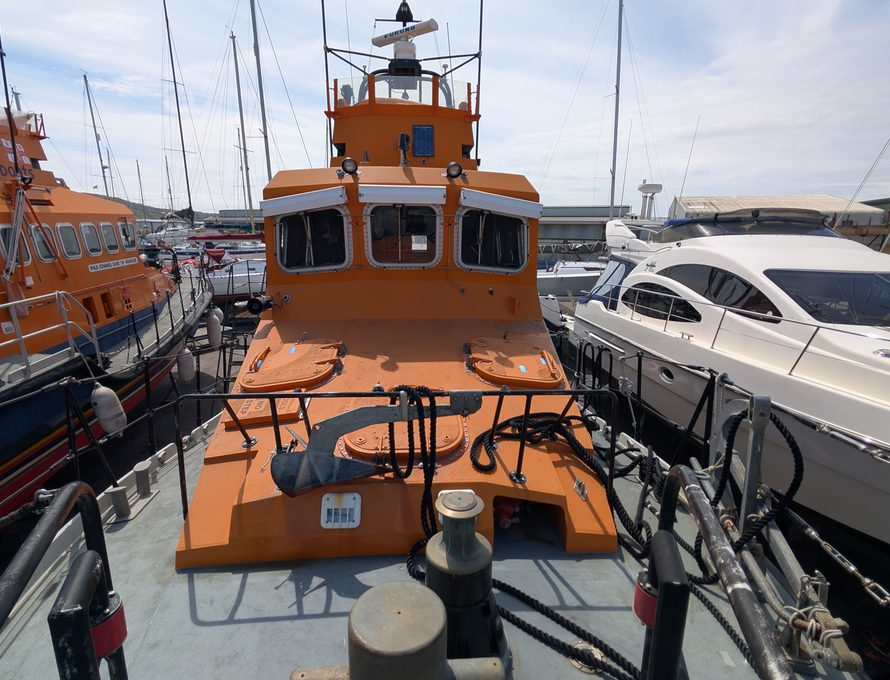
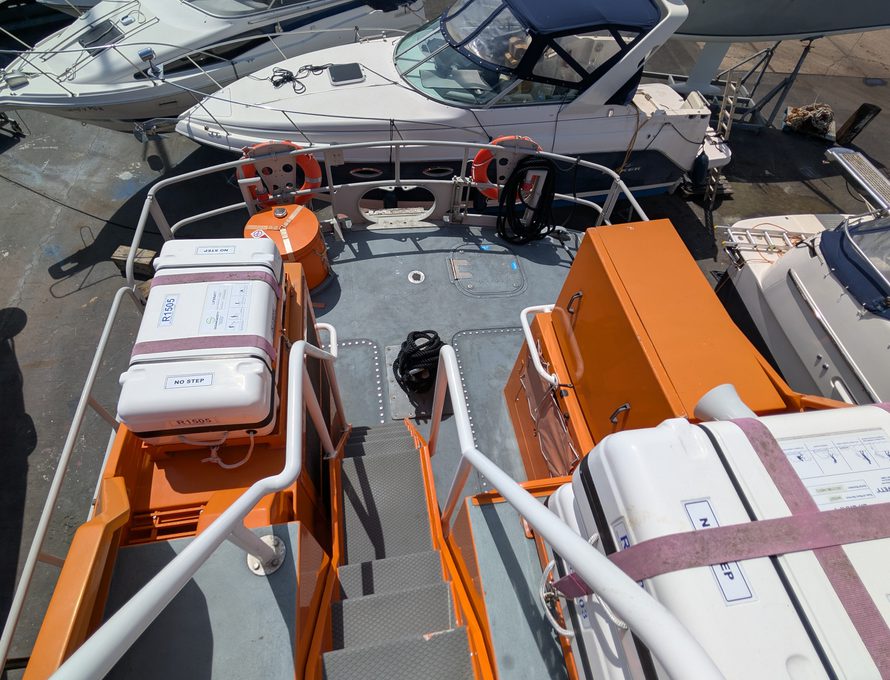
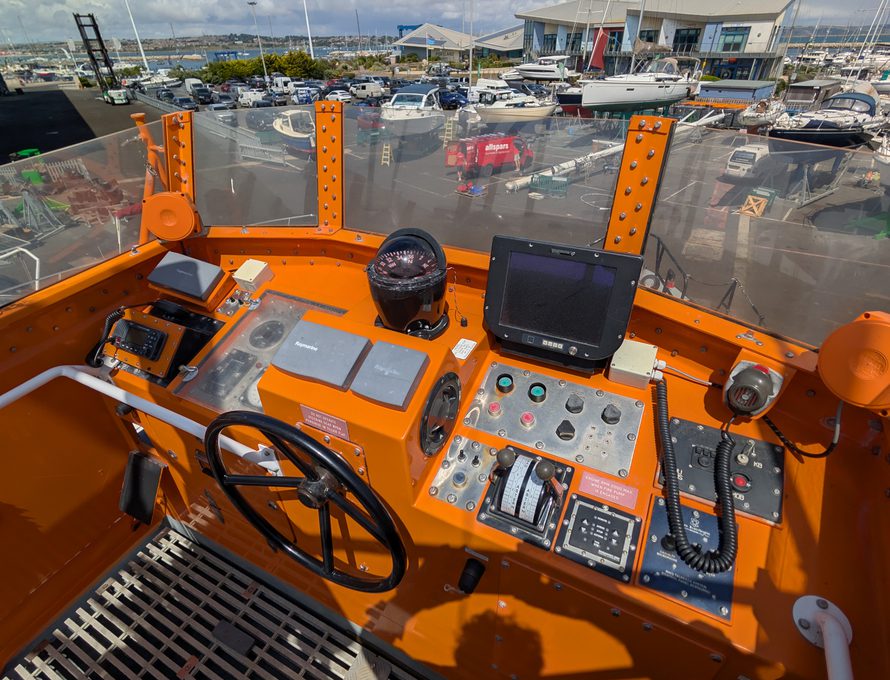
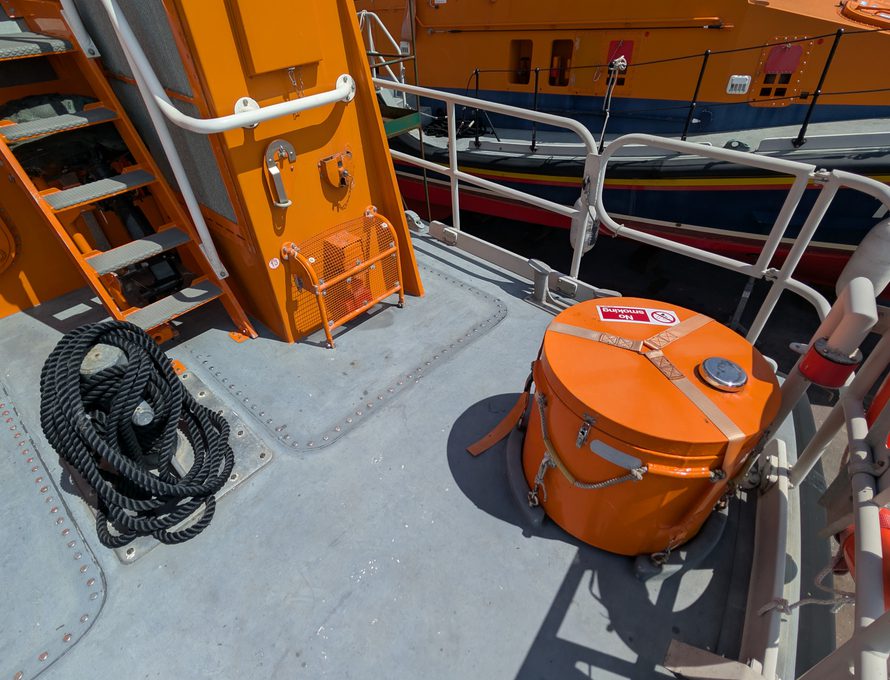
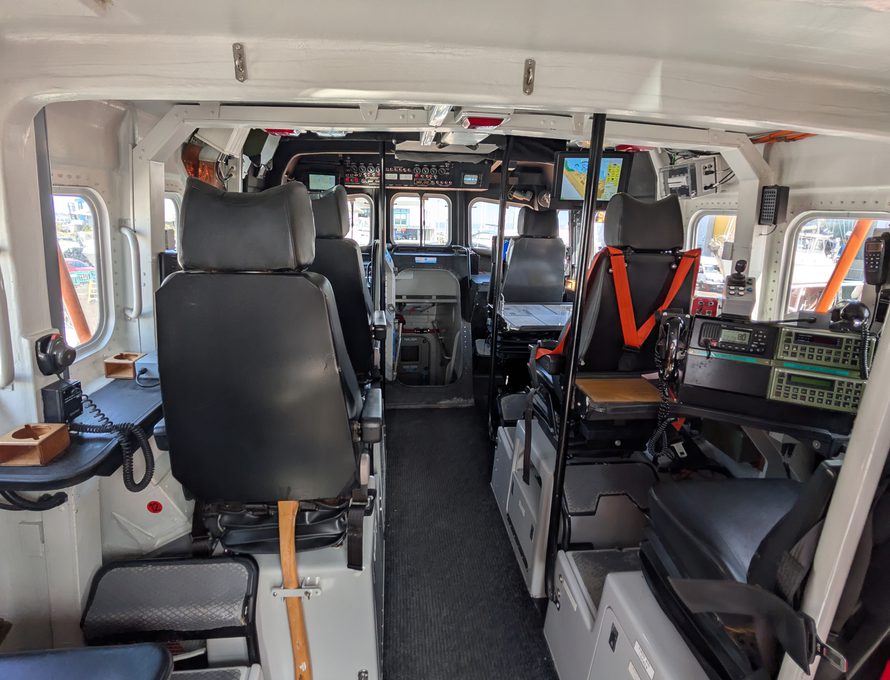
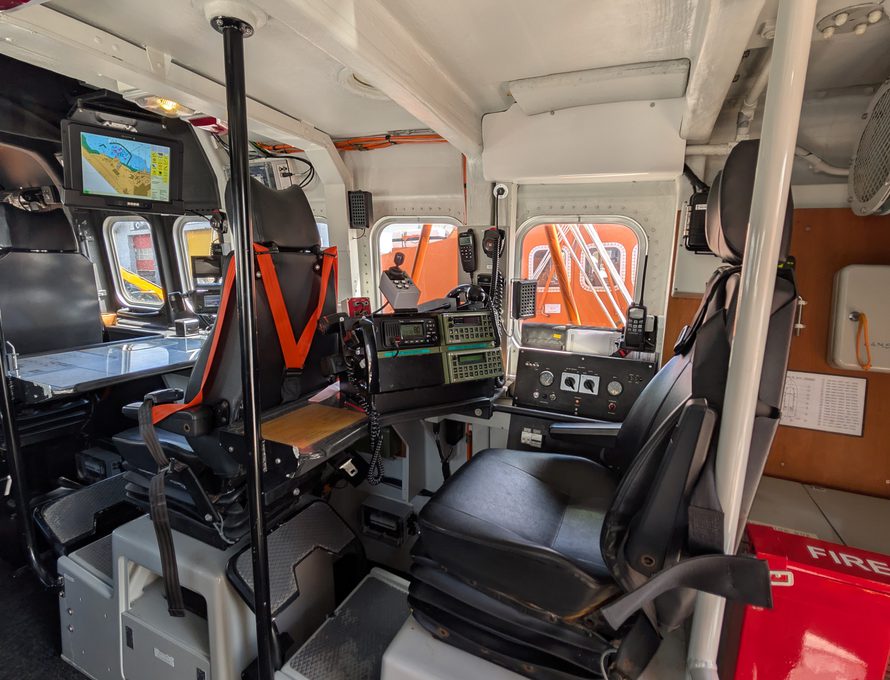
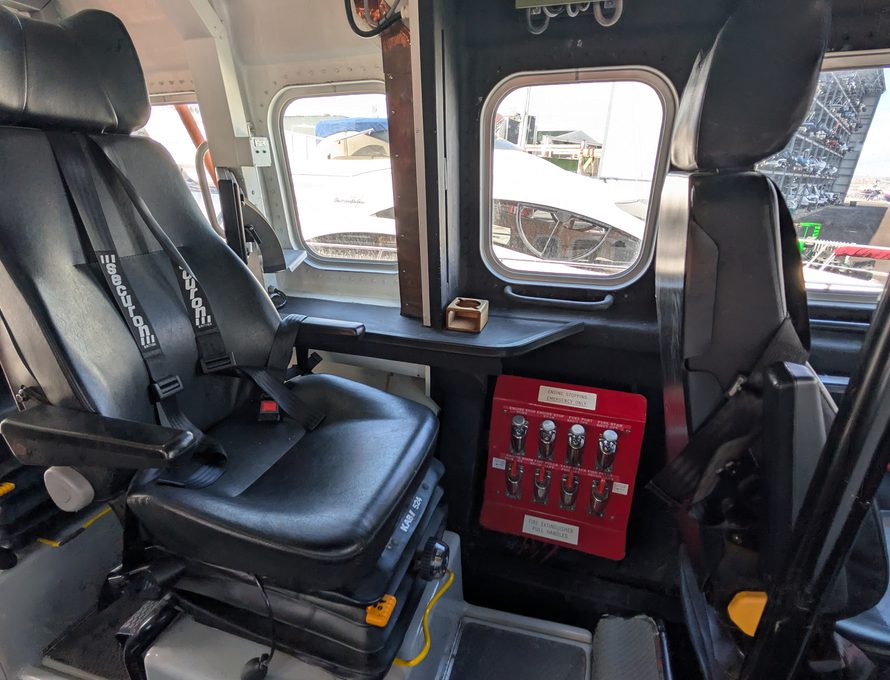
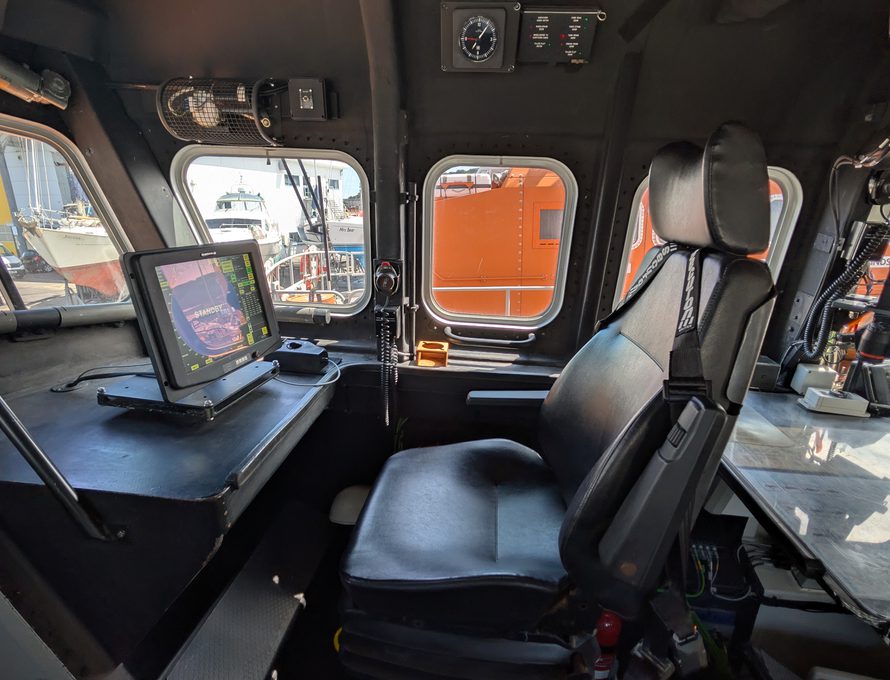
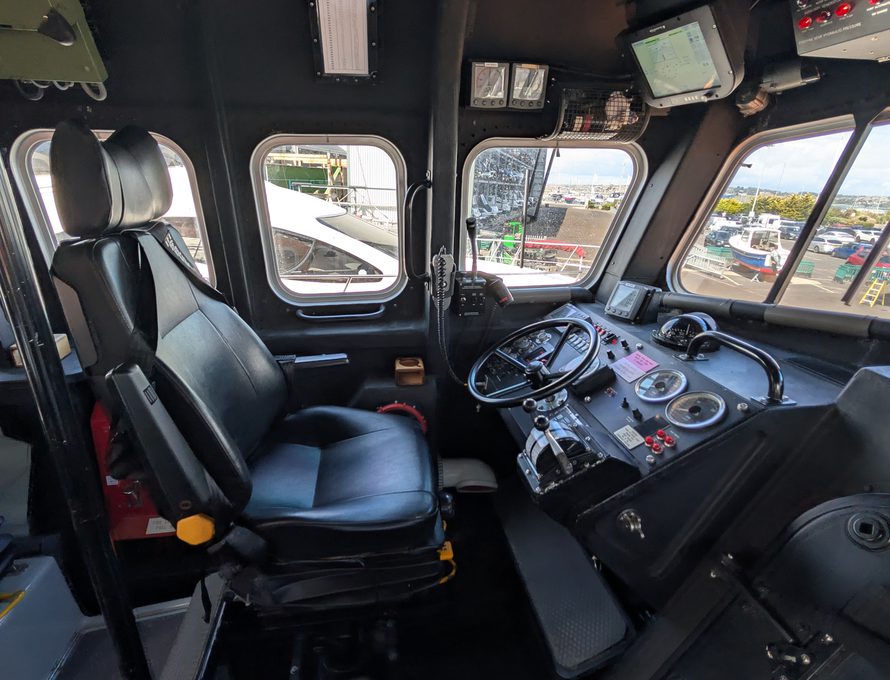
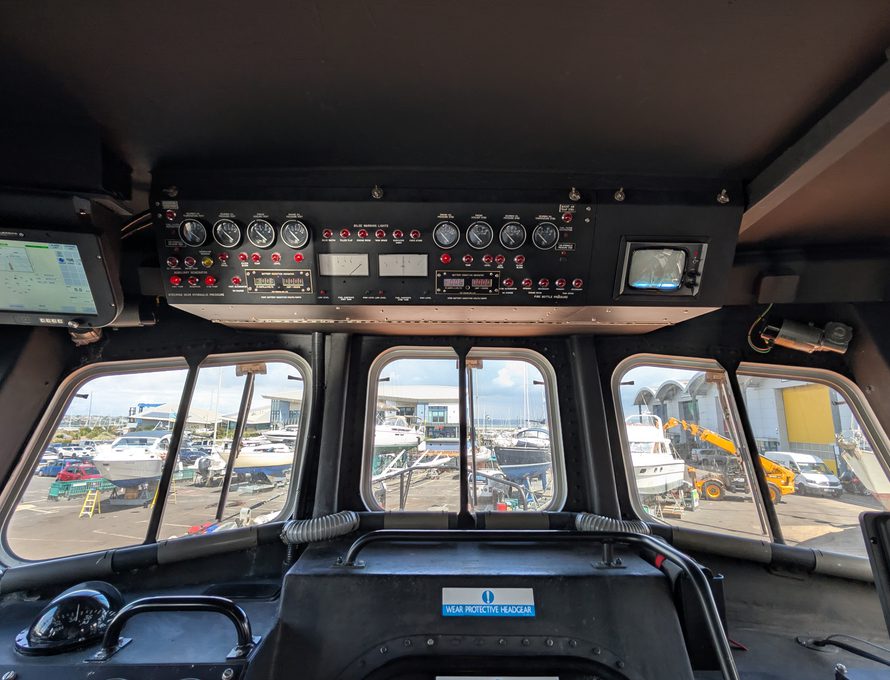
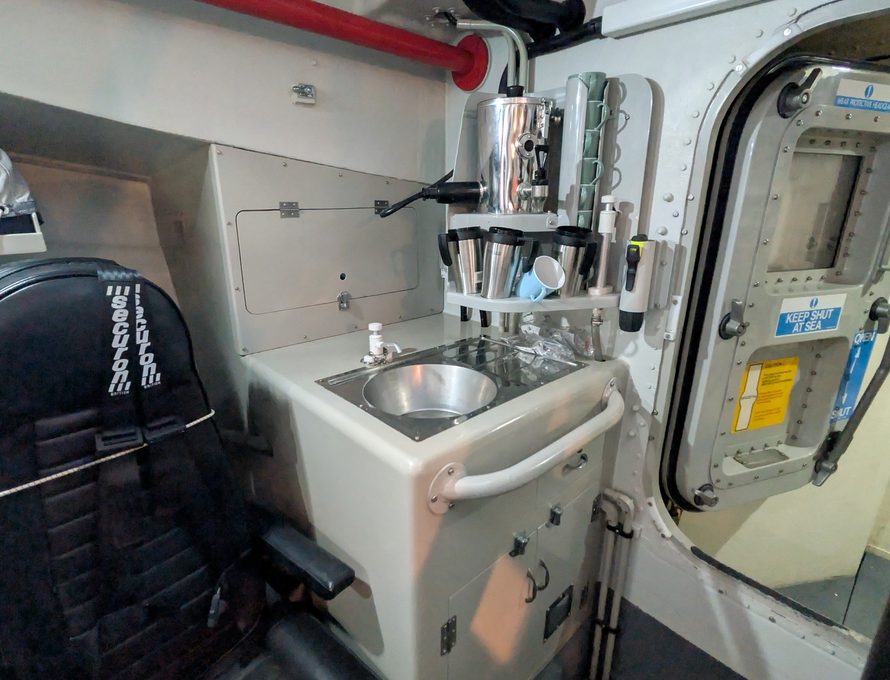
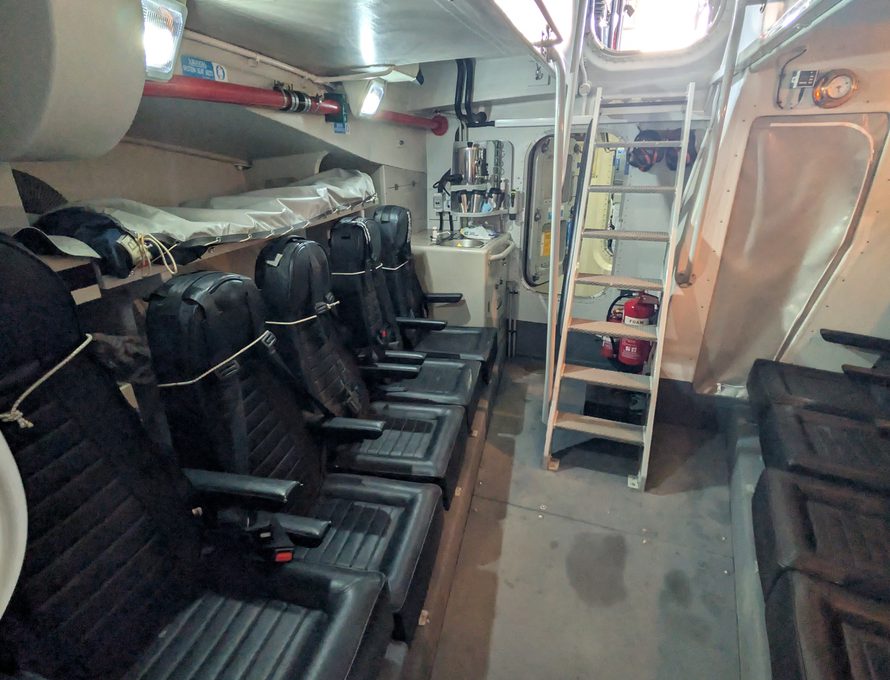


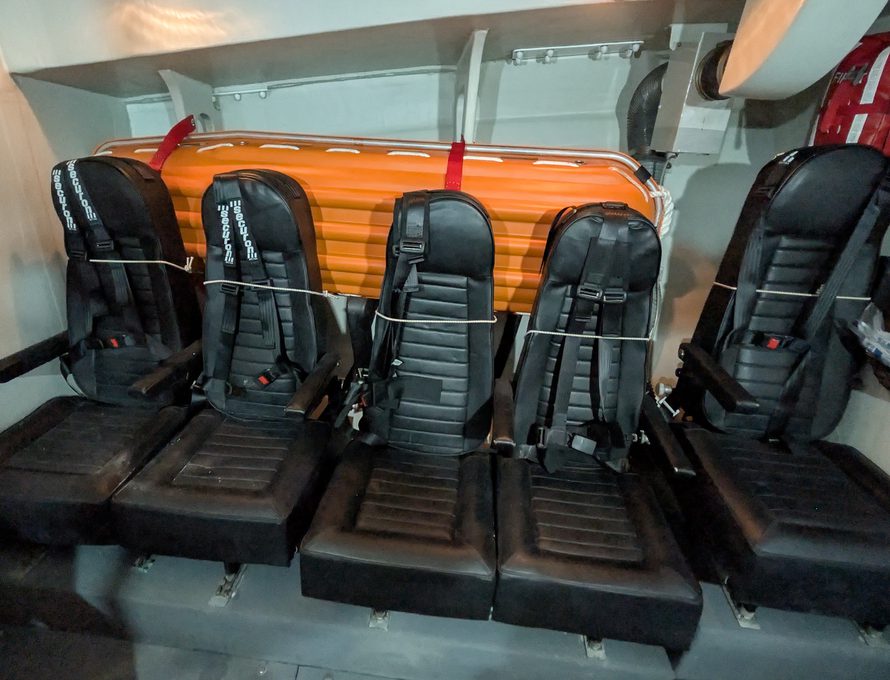
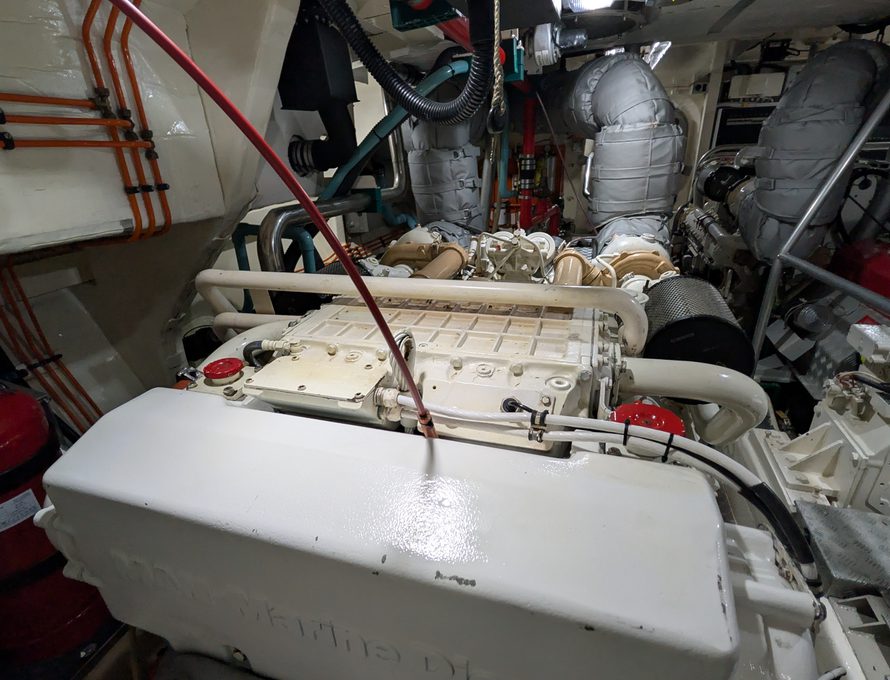
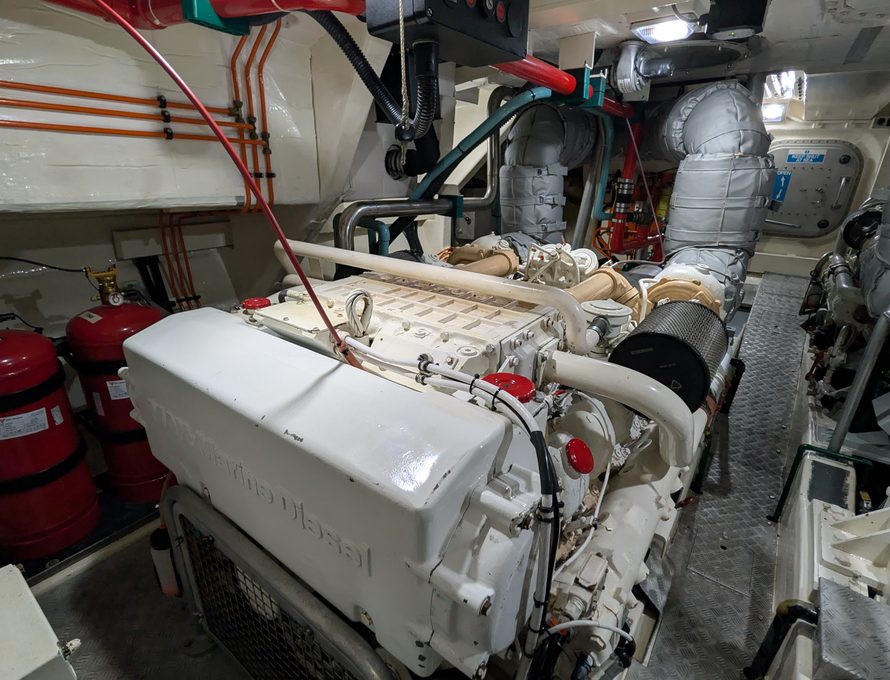
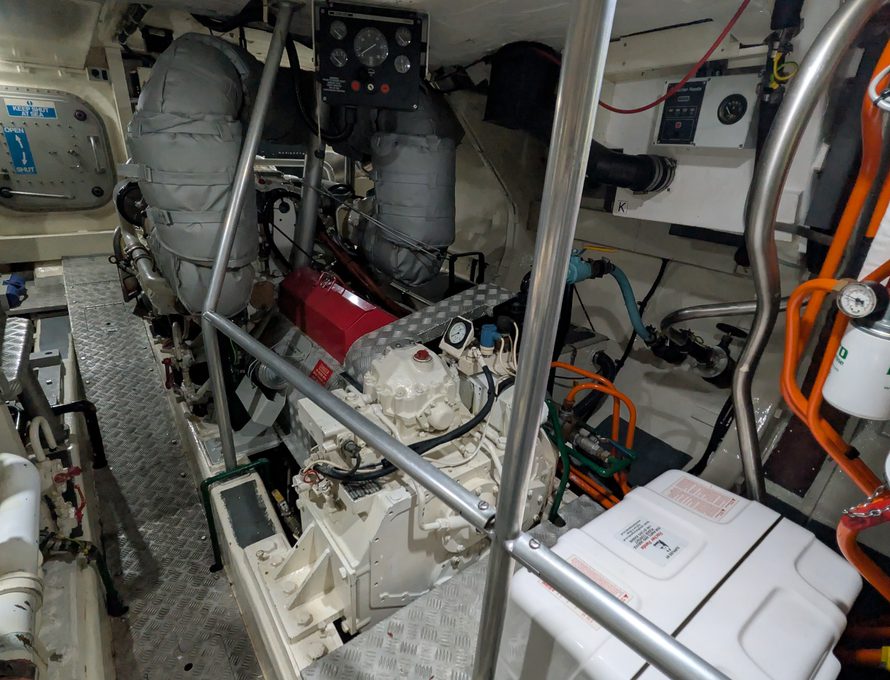
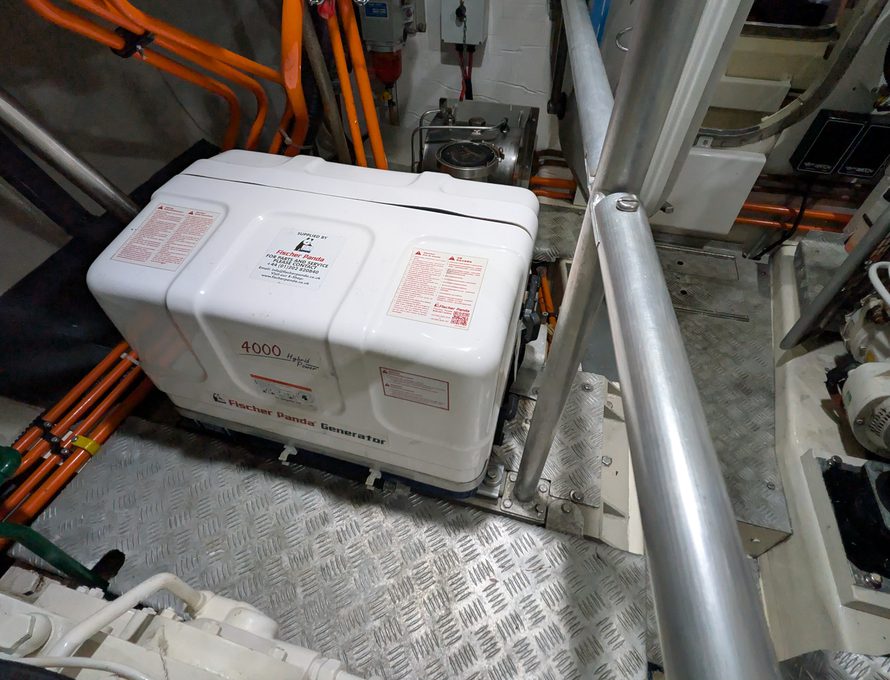
RNLI Lifeboat Trent Class ON1234
- Located at Portland Marina
Details
- Make: RNLI Lifeboat
- Model: Trent Class ON1234
- Engine Make & Model: MAN D2840LE 401
- Horsepower: 860
- Fuel Type: Diesel
- Price: £110,000
- Location: In Portland Marina
- Keel: Bilge Keel
- Hull Construction: Composite
- Drive Type: Shafts and Propellers
Dimensions
- Beam: 4.9m
- Draft: 1.45m
- LOA: 14.3m
- Range: 250 miles
- Displacement: 28000kg
- Fuel Tank Capacity: 4180l
- Builder: Green Marine
- Designer: Green Marine
- Hull Type: Semi Displacement
Summary
The Trent Class Lifeboat, an all-weather vessel operated by the Royal National Lifeboat Institution (RNLI), represents a pivotal advancement in maritime rescue capabilities. Introduced in 1994, with a top speed of 25 knots. This robust vessel features an innovative hard chine hull design that shares its geometric shape with the larger Severn class, allowing it to operate effectively in constrained locations, including marina berths. A key design element is its sheerline, sweeping down into a 'welldeck' area specifically engineered to ease the recovery of casualties, even those on stretchers, combined with a remote 'a-frame' hoist. Its powerful propulsion, advanced navigation and communication systems, and extensive provisions for crew and survivor care underscore its critical role in modern sea rescue. The Trent class has proven highly effective during its service, with early models achieving medal-winning services, demonstrating their operational success in challenging conditions.
Mechanical
Powered by:
Twin MAN diesel engines. Many vessels are fitted with two MAN D2840LE 401 diesel engines, each producing 860 hp (641 kW).
Propulsion Mechanism:
Achieved via ZF190 gearboxes, shafts, and propellers. One of the twin MAN diesel engines is turned around, driving its propeller conventionally, while the other works through a 'V' drive.
Fuel Capacity:
Substantial fuel capacity of 4,180 litres, supporting an impressive operational range of 250 nautical miles (460 km).
Propeller and Rudder Protection:
Propellers and rudders are strategically positioned within partial tunnels set into the hull, complemented by two bilge keels, providing excellent protection from damage, particularly in shallow water.
Deck
Welldeck: A critical design element where the hull's sheerline sweeps down into, specifically engineered to facilitate the ease of survivor recovery onto the lifeboat.
Salvage Pump: Housed in a watertight container on the afterdeck for inter-vessel salvage operations.
Fire Hoses: Two fire hoses are available on the afterdeck for proficient firefighting capabilities.
Crew Seating: The main deckhouse provides seating for six crew members, plus an additional seat for a doctor.
Safety
All-weather vessel: Designed for extensive maritime search and rescue coverage in all conditions.
Twin-engine setup: Provides critical redundancy, ensuring propulsion even if one engine fails.
Robust Construction: Constructed using advanced composite materials (epoxy fibre-reinforced composite, 100mm thick foam-cored sandwich construction for the hull, 25mm thick foam-cored sandwich for the deck/superstructure).
Watertight Compartments: Designed with five watertight bulkheads, creating six distinct compartments (fore peak, fore store, survivor cabin, tank space, machinery space, and aft peak steering compartment) to ensure buoyancy even if compromised.
Self-Righting Capability: The main deckhouse is a watertight space, integral to the boat's self-righting capability, allowing it to recover from a capsize.
Survivor Capacity: Total survivor capacity of 73 persons, with a self-righting capacity of 20 persons.
Propeller and Rudder Protection: Housed within partial tunnels and complemented by bilge keels for protection from damage in shallow water and against underwater obstacles.
Disclaimer
For a full, detailed specification with additional photographs and direct contact details for the listing office visit our website
The Company offers the details of this vessel in good faith but cannot guarantee or warrant the accuracy of this information nor warrant the condition of the vessel. A buyer should instruct his agents, or his surveyors, to investigate such details as the buyer desires validated. This vessel is offered subject to prior sale, price change, or withdrawal without notice.
Unless otherwise stated on the specification sheet the following presumptions are made
- Sail drive and shaft seals are more than 5 years of age
- Fuel and gas hoses and regulators are over 5 years old
- Standing rigging and sails are more than 10 years old
Please note that as the broker/agent, we cannot guarantee or warrant the serviceability of any safety equipment included within the inventory, including but not limited to the condition, operation, or service dates of such equipment. It is the responsibility of the buyer to thoroughly inspect and assess the condition of all safety equipment prior to purchase.
NOTE - Please ring our offices prior to visiting, as the boat may be unavailable for viewing or located at a different marina.
Recommended Boats

Colvic Sunquest 50















































